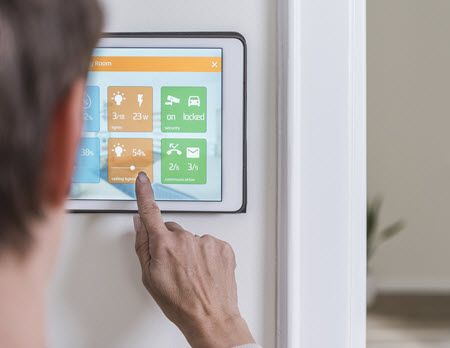Scripps: Peace of Mind Drives Big Piece of Smart Home Device Adoption

Home tech enthusiasts cite "peace of mind" as the main reason to invest in smart home technology.
That is according to a new Scripps Networks Interactive survey of 612 homeowners; the study also found that homeowners are often wooed to smart home tech via a gift.
Scripps said personal recommendations are the top driver of home tech buy, and that getting a tech gift "feels" like a recommendation from a friend.
The survey, drawn from Scripps's panel of self-described "home enthusiasts," was conducted in October 2017.
Almost three quarters of respondents said they "love" having the latest and greatest in home tech, like the Amazon Echo or devices from Nest. An equal percentage said they thought that home tech made them better parents.
A Nest for the New Nest
The survey found that three "life events" help prompt connected home purchases: home renovations, moving into a new home and a boost in household income.
But while homeowners want all that new gear, they don't want it advertising itself. One of the draws of the devices is that they are seamless and thus somewhat "forgettable ... in that physically and psychologically unobtrusive devices allow the household to operate in a focused and balanced manner, free of technological complication," a Scripps spokesperson said.
Multichannel Newsletter
The smarter way to stay on top of the multichannel video marketplace. Sign up below.
Demand for smart home tech is lower in the kitchen, however; there it is considered a "nice-to-have" rather than a must-have. More than a third of respondents said they were not interested in connected kitchen appliances and did not see much utility beyond the "gee whiz" factor.
The global smart home device market will increase to $31.4 billion in 2018 from $27.5 billion in 2017, and will almost double by 2022 to more than $53 billion, according to data aggregator Statistica.
Contributing editor John Eggerton has been an editor and/or writer on media regulation, legislation and policy for over four decades, including covering the FCC, FTC, Congress, the major media trade associations, and the federal courts. In addition to Multichannel News and Broadcasting + Cable, his work has appeared in Radio World, TV Technology, TV Fax, This Week in Consumer Electronics, Variety and the Encyclopedia Britannica.

